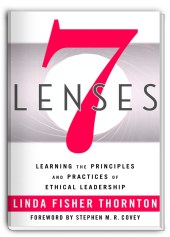By Linda Fisher Thornton
How transformational is the power of trust in organizations? It increases capacity and improves performance. It improves work satisfaction and quality of life:
“Compared with people at low-trust companies, people at high-trust companies report: 74% less stress, 106% more energy at work, 50% higher productivity, 13% fewer sick days, 76% more engagement, 29% more satisfaction with their lives, 40% less burnout.”
Paul J. Zak, The Neuroscience of Trust, HBR
Trust is no longer considered a “nice to have” element in the effective workplace. It is a “must have” element that energizes the whole organization. Working in a safe high-trust environment, people can do extraordinary things.
On Monday I received a Trust Across America 2017 Top Thought Leaders in Trust award an
See the short articles contributed by the Trust Across America 2017 Top Thought Leaders in Trust: Lifetime Award winners in the latest issue of TRUST! Magazine. This quote is from my piece on What Trust Means to Me on page 13:
“When people work in a high trust environment, they experience the freedom and space to excel that leads to nothing less than organizational magic.”
![]()
Learn To See Through All 7 Lenses of Ethical Responsibility
Includes case examples and questions.
Click the book cover for a preview.
Unleash the Positive Power of Ethical Leadership®
©2017 Leading in Context LLC




Reblogged this on Gr8fullsoul.
LikeLike
Cam, Thanks so much for articulating the continuum of trust!
LikeLike
Trust is often called an attitude, a propensity, a cognition, an intention, and/or a willingness to act. But, properly, trust is identified by the Theory of Reasoned Action as all of these elements — and is, ultimately, the relinquishing of one’s control and compliance with another in the expectant hope that the other party will honor the duties of a perceived social contract.
Trust is often called “the glue” holding relationships together. It is almost universally described as being on a continuum . . . . . and that continuum ranges from minimal (and often dysfunctional) compliance to stewardship ownership of the organization’s mission and a willingness to go the extra mile in pursuit of the organization and its leader’s action plan.
Despite the thousands of articles about leadership and trust, there continues to be a “fog” around its definition and trust and trustworthiness are often interchanged in the nomenclature as if they were the same thing . . . . . which they are definitely not!
LikeLike